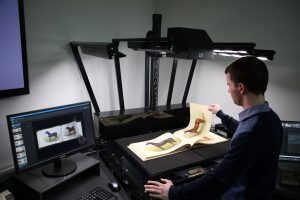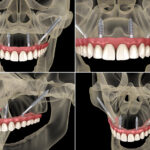Attention book lovers and tech enthusiasts! Are you ready to embark on a mesmerizing journey through the evolution of book scanners? Prepare to be captivated as we delve into the fascinating realm where cutting-edge technology intersects with cherished literary treasures. From humble beginnings to mind-boggling advancements, this comprehensive guide will unveil the captivating story behind book scanning, revealing how it has revolutionized our access to knowledge and transformed the way we interact with books. So grab your favorite novel, sit back, and join us on this enlightening adventure as we explore the remarkable transformation of book scanners throughout history!
Introduction to Book Scanners
Book scanners are devices that are used to digitize books and other printed materials. They come in a variety of shapes and sizes and can be used for a variety of purposes, from personal use to large-scale projects.
Most book scanners consist of a camera mounted on a frame, which is placed over the pages of the book. The pages are then slowly turned, and the camera captures an image of each page. The images are then stored on a computer, where they can be edited, indexed, and searched.
Book scanners can be used to create digital copies of books, which can be read on computers or other digital devices. They can also be used to create searchable databases of printed materials, which can be used for research or other purposes. Book scanners can also be used to preserve old or rare books, by creating digital copies that can be stored safely and accessed easily.
Book scanners are devices that are used to convert physical books into digital formats. There are a variety of book scanner designs and technologies on the market, but they all share the common goal of digitizing books.
One of the first book scanners was designed by Christopher Latham Sholes in 1878. Sholes’ design was based on a device called a pantograph, which was used to copy letters and other documents. The pantograph worked by tracing the outline of an original document onto a piece of paper that was attached to a movable arm. Sholes’ book scanner worked in a similar way, but instead of paper, it used photographic film to capture the image of each page.
The first commercially available book scanner was introduced in 1987 by Japanese company Ryobi. Ryobi’s scanner used a charge-coupled device (CCD) sensor to capture images, which were then stored on a computer hard drive. This type of scanner quickly became popular with libraries and other institutions that needed to digitize large collections of books.
Today, there are many different types of book scanners available on the market. Some scanners are designed for use with specific types of books, such as maps or comics, while others are more versatile and can be used with any type of book. Book scanners range in price from around $100 to over $10,000, depending on their features and capabilities.

Types of Book Scanners
There are a few different types of book scanners on the market. Some are made for scanning bound books, while others are better for scanning loose pages. Here is a breakdown of some of the most popular book scanners:
-Flatbed Scanners: Flatbed scanners are the most common type of scanner. They work by placing the book face down on the scanner bed and then scanning one page at a time. These scanners can be used for both bound and unbound books.
-Sheetfed Scanners: Sheetfed scanners are similar to flatbed scanners, but they feed each page through the scanner instead of scanning it all at once. This makes them ideal for scanning large quantities of pages quickly. However, sheetfed scanners cannot be used for bound books.
-Overhead Scanners: Overhead scanners are designed specifically for scanning bound books. They work by suspending the book over the scanner bed and then scanning each page from top to bottom. This type of scanner is very fast and can scan both sides of a page at once, but it can be difficult to keep the book open and flat while it is being scanned.
-Digital Book Scanners: Digital book scanners are becoming more popular as they offer a number of advantages over traditional scanners. They allow you to scan both sides of a page at once, which greatly reduces scanning time. They also typically have higher resolutions than traditional scanners, so you can produce high-quality scans.
Advantages and Disadvantages of Book Scanners
When it comes to book scanners, there are both advantages and disadvantages that need to be considered. For instance, one advantage is that book scanners can be used to create digital copies of books which can then be stored on a computer or other electronic device. This is particularly beneficial for individuals who want to have a backup copy of a physical book in case the original is lost or damaged. Additionally, scanned books can be shared with others electronically, meaning that they can be read by anyone with an internet connection.
However, there are some disadvantages associated with book scanners as well. For example, depending on the quality of the scanner being used, the digital copy of the book may not be an exact replica of the physical copy. In some cases, scanned books may also lack page numbers or other important features that are included in the physical book. Additionally, it can be time-consuming to scan an entire book, particularly if it is a long one.
When it comes to book scanners, there are both advantages and disadvantages that need to be considered. On the plus side, book scanners can save a lot of time and effort when digitizing large quantities of text. They can also be relatively inexpensive to purchase and operate. On the downside, book scanners can be slow and cumbersome to use. They can produce lower-quality images than more expensive scanning equipment.
An Overview of the Latest Technology
The latest technology in book scanners has made it possible to scan entire books in a matter of seconds. This is a huge improvement over the previous generation of scanners. Which could only scan a few pages at a time.
The new scanners use a combination of optical character recognition (OCR) and imaging technology to quickly and accurately scan an entire book. The OCR software then converts the scanned text into a digital format that can be read on computers and other devices.
The latest book scanners are also much smaller and more portable than their predecessors. This makes them ideal for use in libraries, schools, and other public places where space is limited.
If you’re looking for a book scanner that can handle large volumes of scanning. The latest models from companies like Atiz and Epson are worth considering. For smaller jobs, there are several handheld scanners that are perfect for scanning individual pages or small sections of text.
Common Issues with Book Scanners
There are a few common issues that can occur when using book scanners. Sometimes pages can get stuck together, or the scanner may not pick up all the information on a page. If this happens, it is usually because the scanner needs to be calibrated. Another issue that can occur is that the spine of the book may get in the way of scanning, causing pages to be scanned out of order.
To avoid these issues, it is important to make sure that your book scanner is properly calibrated. If you are having trouble with pages getting stuck together, try scanning them one at a time. If the spine of the book is getting in the way, try placing a weight on the spine to hold it down while you scan.
There are a number of common issues that can arise when using book scanners. One of the most frequent problems is that the pages of the book may not lay flat. Which can cause the scanner to produce distorted or unclear images. Another common issue is that the book’s spine may get in the way of the scanner’s imaging surface, resulting in partial or missing pages. Additionally, books with heavily illustrated or colored pages can be more difficult to scan accurately. Some book may have difficulty scanning very large or very small books.
Applications and Uses of Book Scanners
In the past, book scanners were large, expensive, and difficult to use. Today, they are small, affordable, and easy to use. There are many different types of book scanners on the market, each with its own unique features and applications.
One of the most popular types of book scanners is the handheld scanner. These scanners are designed for portability and ease of use. They are perfect for scanning books, magazines, documents, and photos. Handheld scanners can be used at home or in the office.
Another popular type of book scanner is the flatbed scanner. Flatbed scanners are larger than handheld scanners and are designed for more static scanning needs such as scanning bound materials such as books. Flatbed scanners typically have a higher resolution than handheld scanners making them ideal for detailed scans such as archival scanning projects.
Book scanners can also be integrated into multifunction devices such as printers and copiers. These devices offer a convenient all-in-one solution for scanning and copying documents and images.
It has become an essential part of digitization projects such as Google Books and the Internet Archive. These projects rely on book scanners to rapidly scan large quantities of books which are then made available online. I have also been used in efforts to create digital libraries in developing countries where access to traditional libraries is limited.
Conclusion
Book scanners have come a long way in the past few decades, providing an efficient and reliable method of digitizing written works. From their early beginnings as clunky machines to today’s sophisticated devices that can scan up to 1,000 pages per minute. These items offer unmatched speed and accuracy when it comes to scanning documents. Whether you’re looking for a simple solution or something more advanced. There is sure to be a book scanner out there that fits your needs. For more information please visit this website buscells.com











